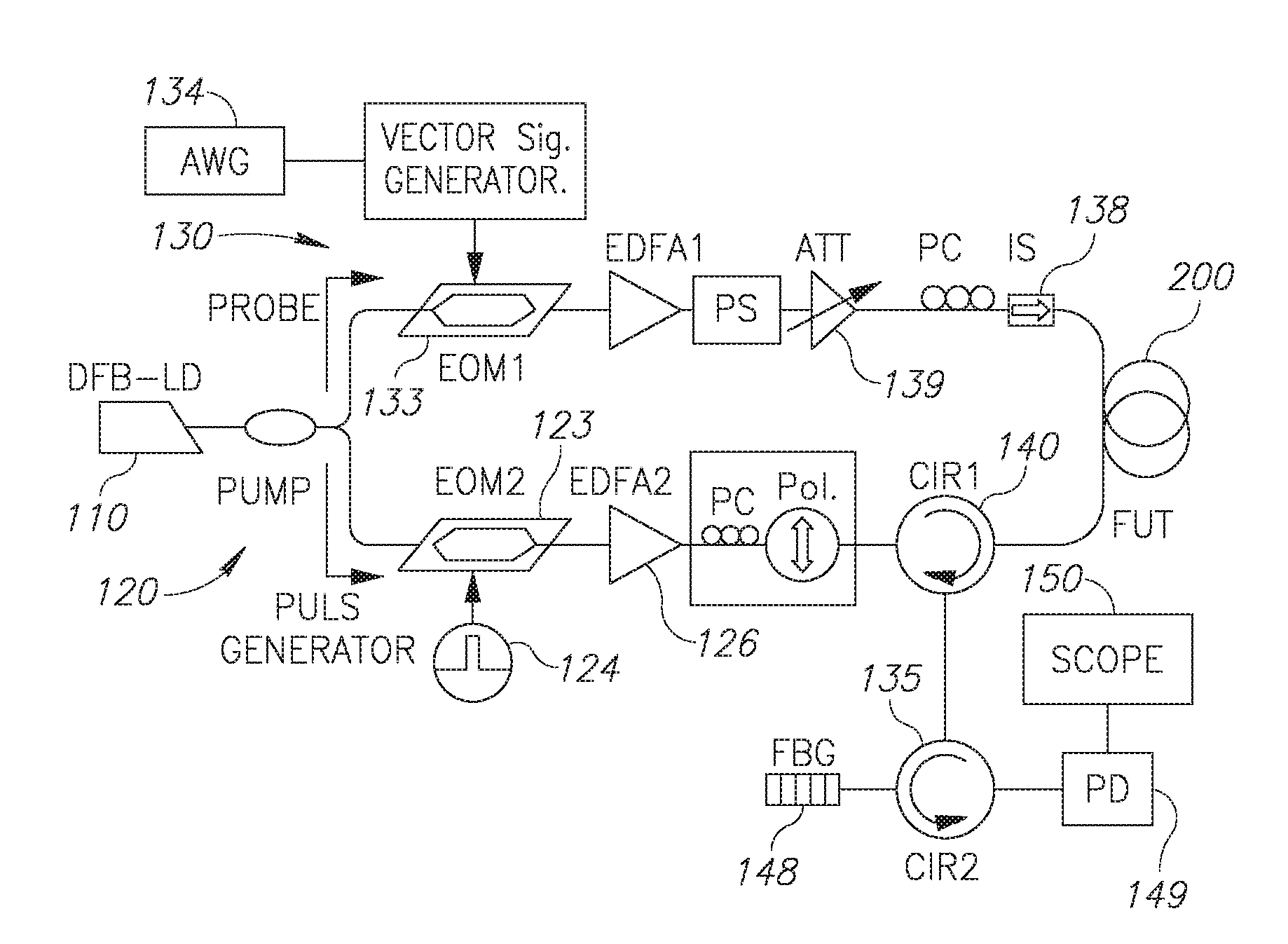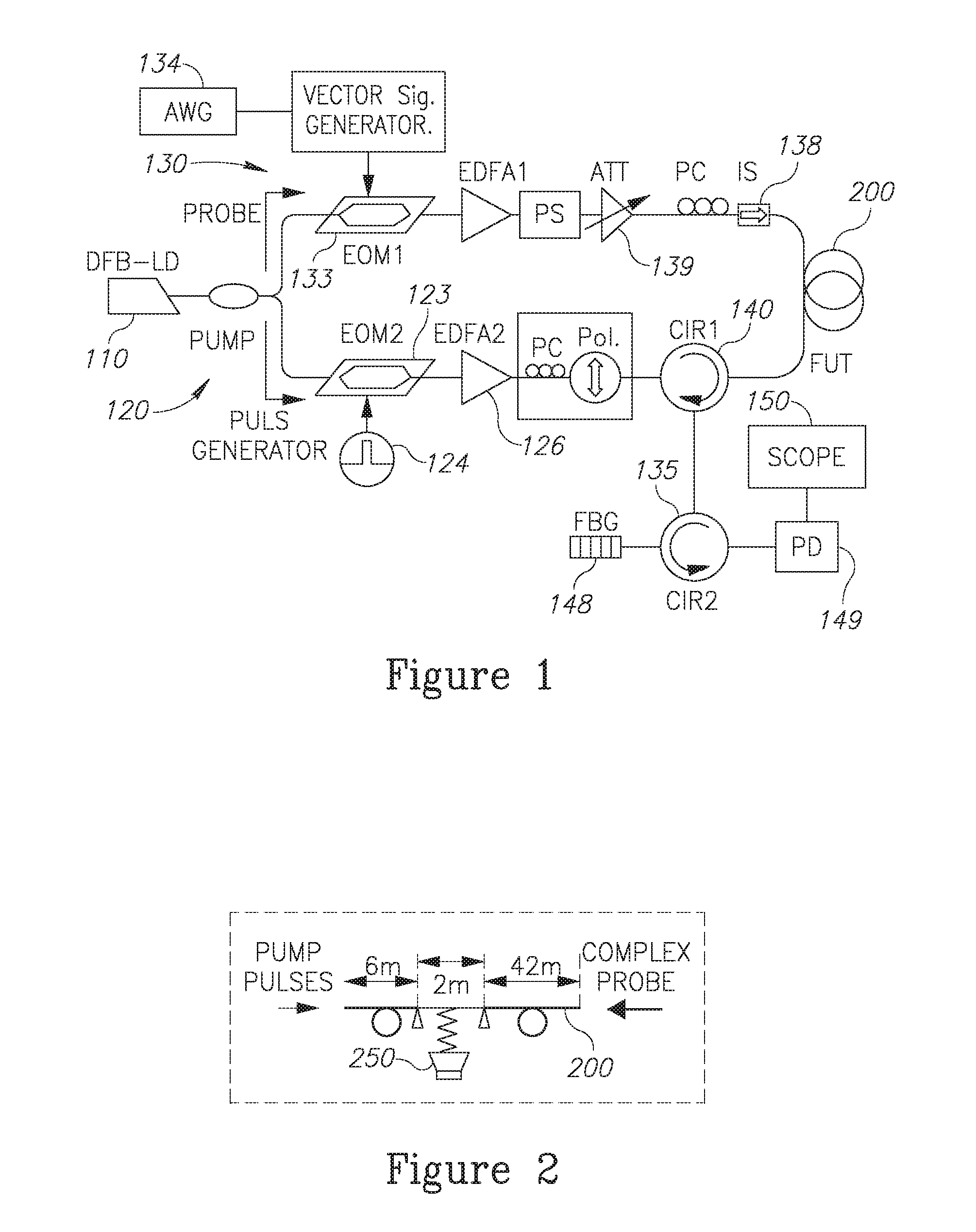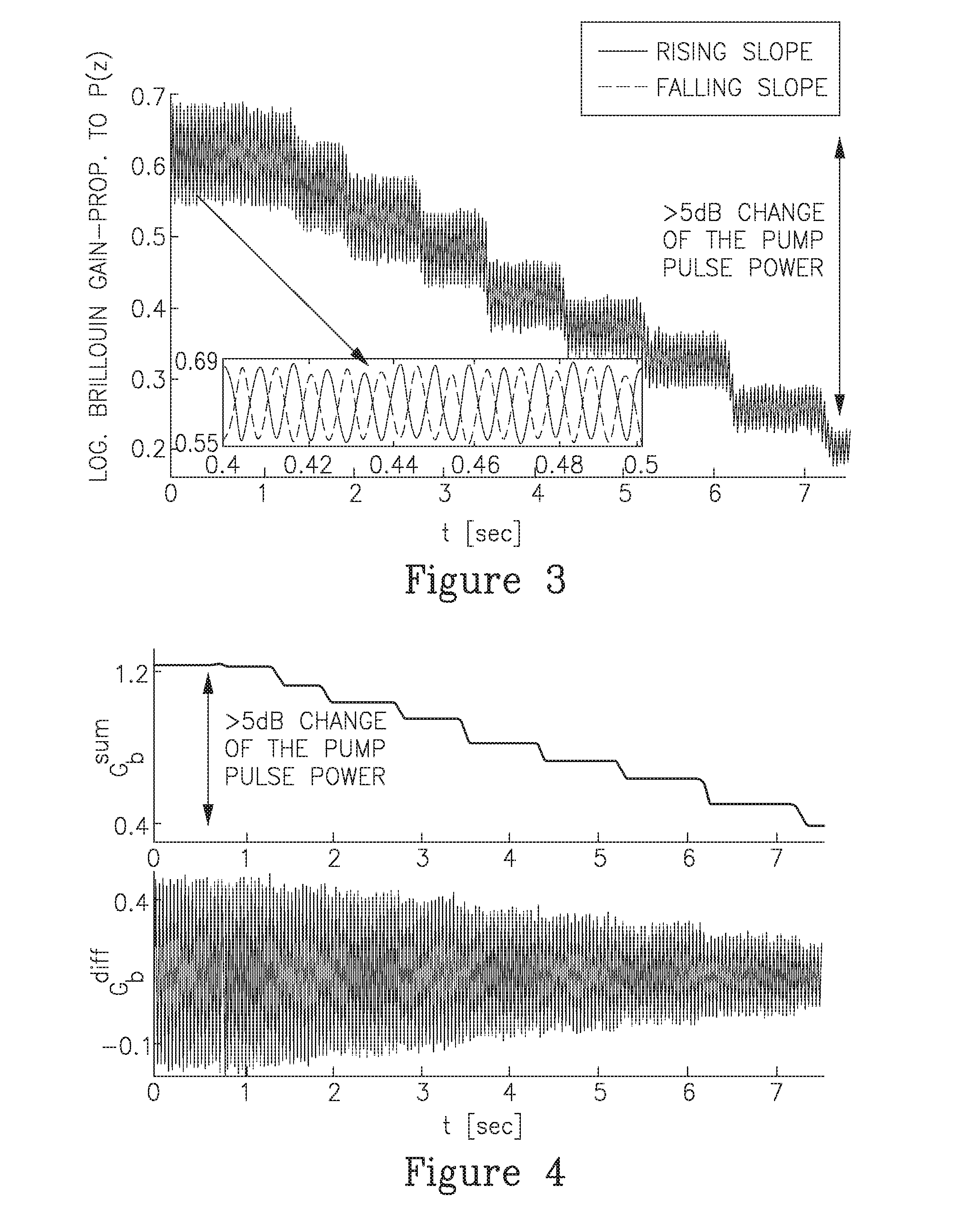Pump-power-independent double slope-assisted distributed and fast brillouin fiber-optic sensor
a fiber-optic sensor, power-dependent technology, applied in the direction of instruments, thermometers, force measurement by measuring optical property variation, etc., can solve the problem that the conversion factor is sensitive to pump power variations that are practically unavoidabl
- Summary
- Abstract
- Description
- Claims
- Application Information
AI Technical Summary
Benefits of technology
Problems solved by technology
Method used
Image
Examples
Embodiment Construction
[0016]Before discussing practical aspects of this invention the underlying theory will first be explained.
[0017]The logarithmic Brillouin-induced gain of the probe signal (i.e., the logarithm of the ratio of amplified probe intensity to the probe intensity with no pump power) at distance z into the fiber is given by:
GB(z,v,vB(z),P(z))=αP(z)·S((v−vb(z)) / ΔvB) (1)
where P(z) is the pump power at z, S(v) is the normalized BGS, v is the optical frequency of the probe, measured with respect to the that of the pump, vB (z) is the Brillouin Frequency Shift “BFS”, denoting the strain / temperature sensitive location of the peak of the BGS at location z, and ΔvB is the Full-Width-Half-Maximum (FWHM) of the BGS, assumed to be strain / temperature insensitive. α depends on various constants of the material but also on the relative polarizations of the pump and probe waves at z. Experimentally, this dependence is removed by polarization scrambling so that α will be treated from now on as a constant...
PUM
 Login to View More
Login to View More Abstract
Description
Claims
Application Information
 Login to View More
Login to View More - R&D
- Intellectual Property
- Life Sciences
- Materials
- Tech Scout
- Unparalleled Data Quality
- Higher Quality Content
- 60% Fewer Hallucinations
Browse by: Latest US Patents, China's latest patents, Technical Efficacy Thesaurus, Application Domain, Technology Topic, Popular Technical Reports.
© 2025 PatSnap. All rights reserved.Legal|Privacy policy|Modern Slavery Act Transparency Statement|Sitemap|About US| Contact US: help@patsnap.com



